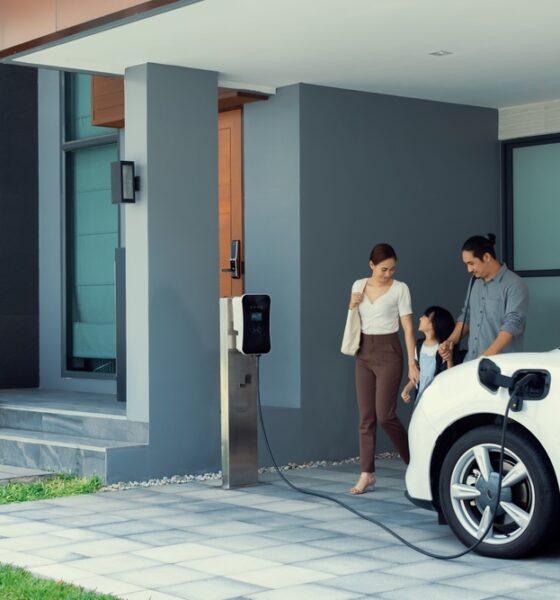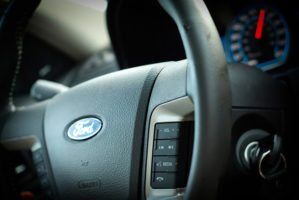

Energy
Doubt No More: Electric Vehicle Charging Dynamic Load Balancing Is The Answer
In the age of advancing technology, with more individuals and businesses shifting toward sustainable means of transport, the electric vehicle revolution is well and truly upon us. And where there’s a revolution, there’s an ever-present need to power it effectively and efficiently. Now, enter the concept of electricvehicle charging dynamic load balancing, an innovative technology paving the way for a more sustainable, efficient, and cost-effective charging solution.
Imagine a world where the demand for electricity load is optimally balanced between various charging stations, leading to improved grid stability, enhanced user experience, and more. Sounds idyllic right? And yet, it is hardly a futuristic fantasy, but an integral part of the present-day reality of the electric vehicle industry. Are you ready to dive into this intriguing world?
In an era fueled by technology, electric vehicles (EVs) are rapidly becoming the norm. One key element that ensures their seamless operation is electric vehicle charging dynamic load balancing. This intricate process performs an integral part in effective EV charging, paving the way for optimized use and numerous benefits. Stay with us as we delve deeper into this topic.
Electric Vehicle Charging: An Overview
Embracing the era of electromobility, the popularity and adoption of electric vehicles (EVs) are skyrocketing globally, including Israel. With this paradigm shift comes the need for effective charging solutions. There exist several types of EV chargers, varying from household-level charging points to public fast-charging stations and ultra-rapid chargers. These differ in their charging capabilities and energy outputs, ranging from 7 kW to more than 350 kW. However, efficient utilization of these charging solutions is the challenge at hand, emphasizing the need for advanced technologies like dynamic load balancing, discussed further in the subsequent sections.
Understanding Dynamic Load Balancing
The term ‘dynamic load balancing’ in the context of electric vehicle charging refers to a sophisticated technique, which manages the power distribution among multiple EV charging stations. This ensures that the power grid is never overloaded and the electricity usage across EV chargers remains within acceptable bounds.
Implementing dynamic load balancing is dependent on intelligence and connectivity infrastructure. This smart charging system communicates with the grid and charging points, enabling it to distribute power optimally based on charging demand and grid capacity. Furthermore, it continuously adjusts power distribution in real-time, catering to the varying demands of different charging stations.
So, dynamic load balancing is not simply about preventing electrical overloads. It also pressures into delivering a reliable, seamless, and efficient charging process for electric vehicle owners, contributing to a satisfying EV ownership experience. As we’ll discuss later under the ‘Benefits of EV Charging Dynamic Load Balancing’ section, this Wevo technology brings abundant advantages to the table.
What Is Dynamic Charging In Electric Vehicles?
Dynamic charging signifies a revolutionary move towards more efficient and flexible charging solutions for electric vehicles. Certified as an innovation in the dynamic world of electric vehicles, dynamic charging seeks to break the confines of stationary charging stations and introduces the idea of charging on the move.
This system uses strategically positioned charging mechanisms embedded within the roads. As an electric vehicle passes over these ‘charging lanes’, the vehicle batteries receive power wirelessly, eliminating the need for traditional, stationary charging. This kind of in-motion charging can greatly enhance the convenience for EV drivers and potentially reshape the landscape of long-distance electric travel.
While the idea of dynamic charging carries a sense of allure, it is important to understand that the implementation of this technology on a mass scale is faced with numerous hurdles in terms of infrastructure, cost, and efficiency. However, the conjunction of this technology with dynamic load balancing can provide far-reaching solutions to these barriers.
As dynamic charging continues to evolve, it cultivates the possibility of eliminating charging time altogether, thereby creating a continuous driving experience for electric vehicle users. Embracing this technology, coupled with effective voltage load balancing, could indeed be a game changer in the e-mobility industry.
Does EV Charger Need Load Balancing?
The question concerning whether an EV charger necessitates load balancing is pretty common. It’s vital to understand that without dynamic load balancing, charger stations could lead to drastic power fluctuations and even power outages. A balanced electrical load ensures efficient, quick, and reliable charging while safeguarding the stability of the power grid. To put it simply, a lack of proper load balancing can compromise not only the charging system but the overall electrical system it is connected to. Hence, implementing EV charging dynamic load balancing is indubitably more than just important—it’s indispensable.
Benefits Of EV Charging Dynamic Load Balancing
There are countless reasons why investing in EV charging dynamic load balancing is beneficial for companies, individuals, and society as a whole. When multiple EVs charge concurrently, without an intelligent load balancing system, the high demand can threaten grid stability, slowing charging speeds and causing blackouts. This is where dynamic load balancing comes to the rescue.
By efficiently managing charging points and distributing electrical loads, it optimizes charging times, ensuring that all connected EVs charge at the swiftest and safest speed possible. This also means that more vehicles can be charged simultaneously, enhancing charging infrastructure’s capacity without tremendous investment or creating an excessive load on the electrical grid. In other words, it increases efficiency while reducing costs—a win-win situation.
Furthermore, dynamic load balancing plays an integral role in improving grid stability and resilience. By cleverly managing the uptake of electricity by EVs, it can prevent demand spikes and contribute to the grid’s overall stability. Implementing dynamic load balancing contributes to Israel’s broader sustainability goals by conserving resources, reducing greenhouse gas emissions, and promoting a resilient charging infrastructure.
Lastly, it offers an optimized user experience. Businesses can rest assured that their electric fleets will be ready to go when needed, and private individuals can rely on efficient, robust charging at home. Remember the section about electric vehicle charging overview? Well, dynamic load balancing gives that concept an edge.
In summary, dynamic load balancing in electric vehicle charging plays a pivotal role in promoting grid stability and efficient power distribution. Embracing this technology opens doors to optimized charging speeds, reduced electrical costs, and a resilient charging ecosystem, thereby enhancing the electric vehicle experience.




















